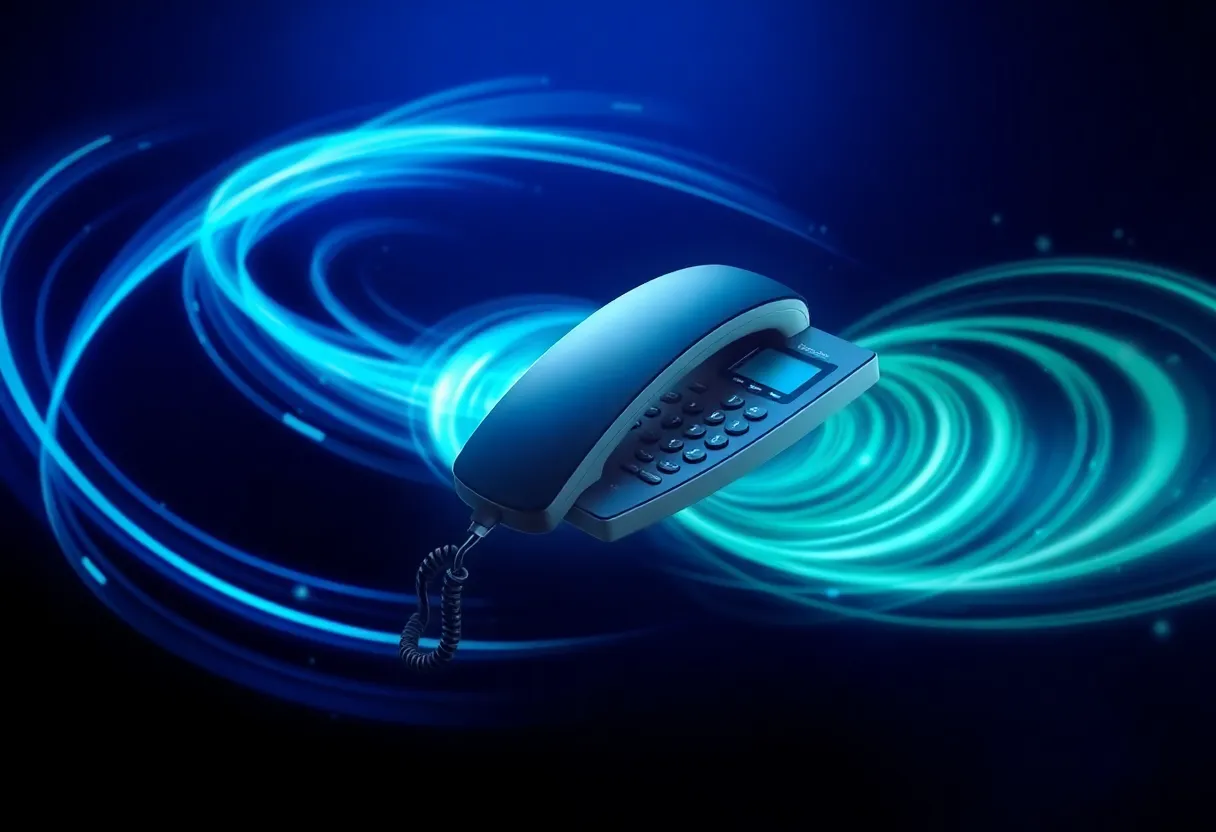If you run a contracting business—HVAC, plumbing, electrical, roofing, landscaping—you live on the phone. But missed calls, voicemail tag, and after-hours inquiries can drain time and cost jobs. The latest generation of AI voice agents gives you a 24/7 receptionist that answers, qualifies, and schedules jobs while you stay on the tools.
The phone is back—but different
Nearly 8 in 10 consumers say phone calls are important for communicating with businesses, yet many won’t answer if the number isn’t recognized. TransUnion’s 2024 survey found 80% of consumers will block calls from numbers they don’t know, underscoring the need for branded, trustworthy outreach (TransUnion, 2024). Source.
Spam has not gone away: Americans received about 52.8 billion robocalls in 2024, according to YouMail’s index (2025). Source.
For contractors, that means two things:
- You still need voice to win high-intent, urgent jobs.
- You also need consistent, trusted answering—even after hours—so qualified leads never hit voicemail.
Good news: AI voice agents can now hold natural, real-time conversations with sub‑second latency, making them suitable for inbound calls and proactive callbacks. Industry reporting in June 2025 noted response times under 400 ms for modern voice agents, comparable to human pacing (Business Insider, 2025). Source.
How AI voice agents work (in plain English)
What it does
- Answers every call instantly and politely.
- Understands requests ("book an estimate," "reschedule," "is this under warranty?").
- Checks your availability and books or reschedules on the spot.
- Routes urgent jobs to the right on‑call tech and filters spam.
- Logs transcripts and updates your CRM automatically.
What powers it
- Speech recognition + natural language models for two‑way conversation.
- Rules you set (service areas, job types, pricing windows).
- Calendar/CRM integrations to prevent double‑booking and keep records tidy.
- Caller ID and allow/block lists to cut spam and scams.
Scheduling that actually sticks
Scheduling is where contractors feel the time savings fastest. AI voice agents can enforce travel time buffers, technician skills, and on‑site constraints while offering customers the soonest realistic slot. They also send confirmations and reminders automatically.
Evidence: real reminders beat voicemail
In a study summarized by Oregon Health & Science University, direct phone reminders produced a 3% no‑show rate versus 24% when only a voicemail was left, and 39% when there was no answer (Psychiatric Services study; OHSU, 2017). Source.
AI voice agents combine the "live contact" benefit with consistency—they call or text every time, at the best moment, with clear options to confirm or reschedule.
Quick wins for contractors
- Offer same‑day and next‑day windows for emergencies; let the agent triage priority.
- Automate confirmations at booking + a reminder 24 hours before the visit.
- Require a mobile number so reminders can go by voice or text.
- Use hold‑out windows for supply runs and drive time to cut overruns.
- Capture reason codes (warranty, new install, estimate) to assign the right tech.
Answering, qualifying, and routing every call
Speed matters. Classic research shows companies that try to contact a web lead within one hour are nearly 7× more likely to qualify it than those waiting longer, and 60× more likely than those waiting 24 hours (Harvard Business Review, 2011). Source.
AI voice agents make that possible on autopilot—they answer immediately, capture intent, and either book directly or warm‑transfer to the right person. They can also call back recent missed calls to recover opportunities.
| Task | Manual | With AI voice agent |
|---|---|---|
| After‑hours coverage | Voicemail, next‑day callbacks | 24/7 answering + scheduling |
| Spam screening | Manual recognition | Allow/block lists + heuristics |
| Lead qualification | Phone tag | Instant Q&A + data capture |
| Urgent jobs | Missed or delayed | Immediate route to on‑call |
ROI you can measure
Back‑of‑the‑napkin math
- Monthly inbound leads by phone: 120
- Historic answer rate: 55% (65 calls answered)
- Close rate from answered calls: 35% → ~23 jobs
- Average profit per job: $280
- Before Profit ≈ $6,440
- After AI If answer rate rises to 90% and same close rate holds: 38 jobs → Profit ≈ $10,640
- Lift: ≈ $4,200/month before labor savings from fewer back‑and‑forth calls.
Where savings come from
- Fewer no‑shows through consistent confirmations and reminders.
- Less phone tag and manual data entry.
- Recovered after‑hours leads that used to go to competitors.
Implementation checklist
- Define your service area, hours, job types, emergency rules, and on‑call rotation.
- Connect your calendar and CRM so the agent can book and log automatically. See integrations.
- Write 6–10 short answers the agent should always know (pricing ranges, warranties, permits, parts brands).
- Set a friendly caller ID name and greeting so customers recognize your business.
- Turn on confirmations and 24‑hour reminders for every booked visit.
- Review transcripts weekly for the first month and refine routing/answers.
Trust, caller ID, and compliance
Consumers are wary of unknown numbers, and regulators are cracking down on spam, spoofing, and AI‑generated robocalls. The FCC has tightened rules and guidance on spoofed robocalls and robotexts, including applying Do‑Not‑Call protections to text and targeting AI‑generated calling scams (2024–2025). Source.
Best practices
- Use a recognizable local number and branded caller ID where available.
- Honor opt‑out requests and keep a suppression list synced with your CRM.
- Record and store consent for outbound callbacks or marketing.
- Identify your business at the start of every call and in every text.
Why Small Business Chatbot fits contractors
Small Business Chatbot offers an AI voice agent designed to answer calls, book appointments, and route leads, so you can keep crews productive while new jobs keep flowing. It installs quickly, adapts to your site content, and keeps conversations and action items organized in your inbox and CRM.
- Answers calls, books and reschedules from your real availability.
- Filters spam and routes emergencies to the on‑call tech.
- Works with popular calendars and CRMs; see the growing list of integrations.
- Proven with small businesses across North America; read customer reviews.
Frequently asked questions for contractors
- Will an AI voice agent sound robotic?
- No. Modern voice agents respond in natural timing and can handle interruptions, clarifications, and accents. Industry reporting in 2025 noted sub‑second response times comparable to human pacing (Business Insider, 2025). Source.
- Can it reduce no‑shows?
- Yes. Automated confirmations and live reminder calls help customers show up. A study summarized by OHSU showed direct reminders dramatically outperformed voicemail (3% vs 24% no‑show). Source.
- Is this only for big companies?
- No. Most construction firms are still early in AI adoption, which means small shops that start now can gain an edge in responsiveness and professionalism (RICS, 2025). Source.
- How does this help me win more jobs?
- By answering instantly and following up quickly. Companies that respond to leads within an hour are much more likely to qualify them than those who wait (Harvard Business Review, 2011). Source.
- What about spam and scam calls?
- The agent can block obvious spam and always identify your business clearly. The FCC continues to address spoofed robocalls and AI‑generated scams; following best practices protects your brand and customers (FCC, 2024–2025). Source.
- Will customers pick up?
- Consumers value phone contact but are wary of unknown numbers. Use a recognizable local number and friendly ID. Research shows nearly 8 in 10 consumers still consider phone calls important in business communication (TransUnion, 2024). Source.



